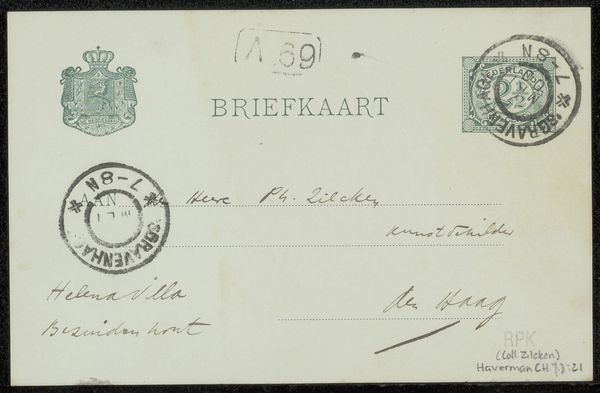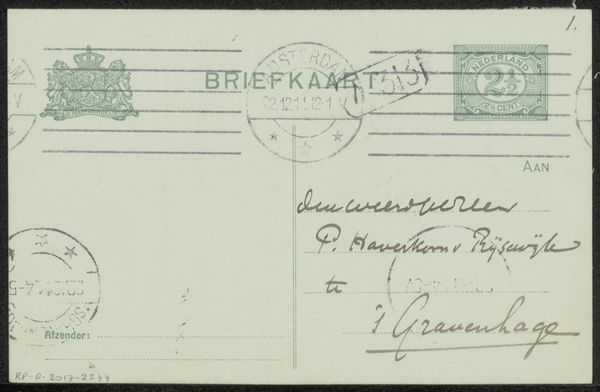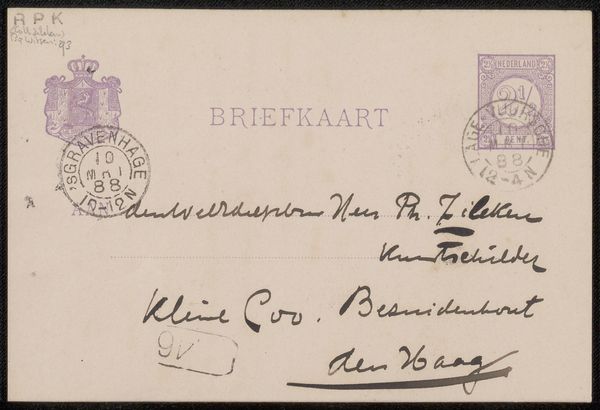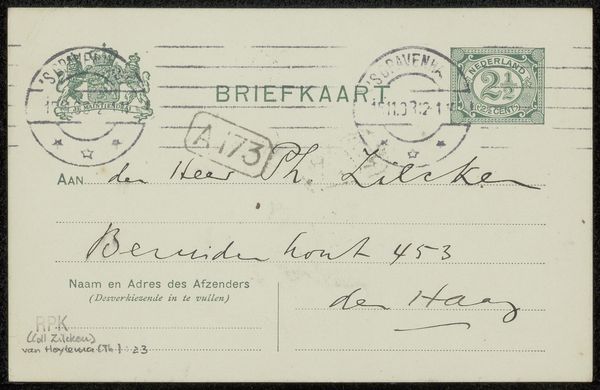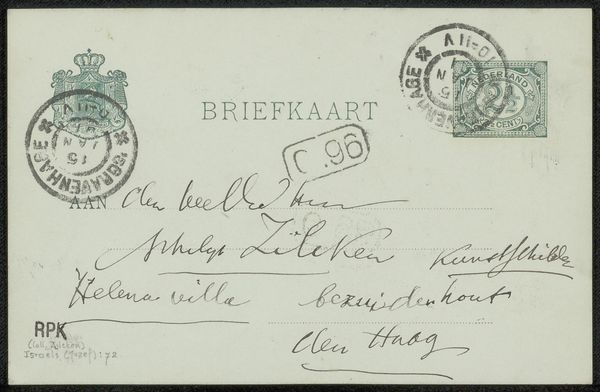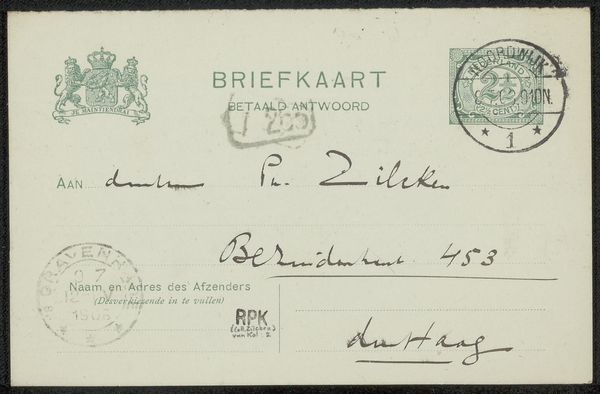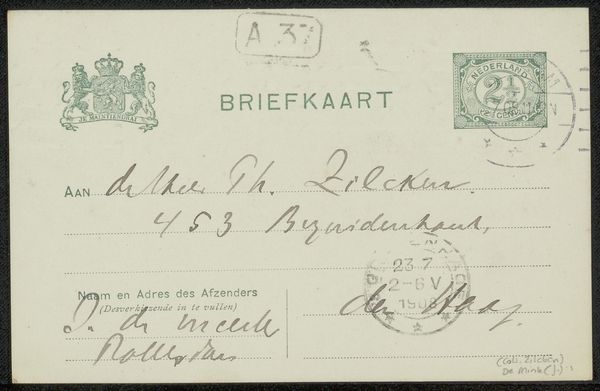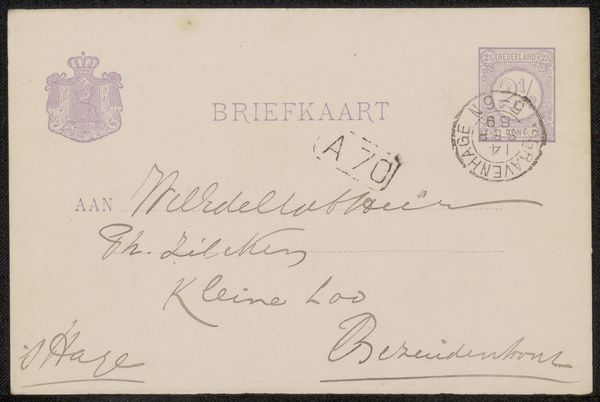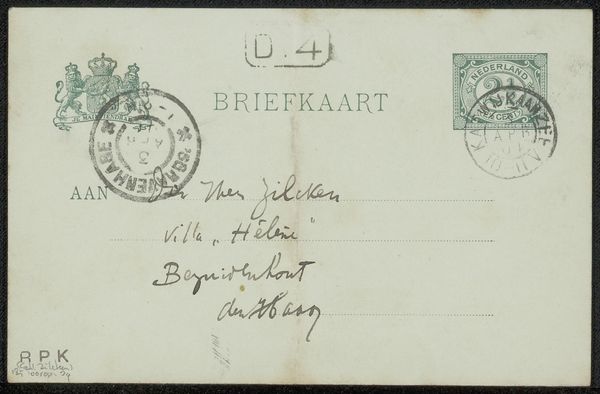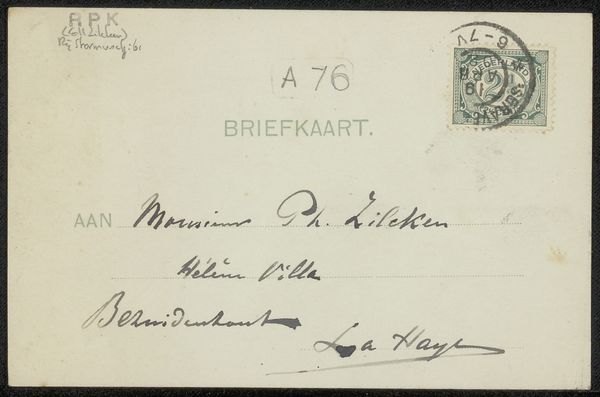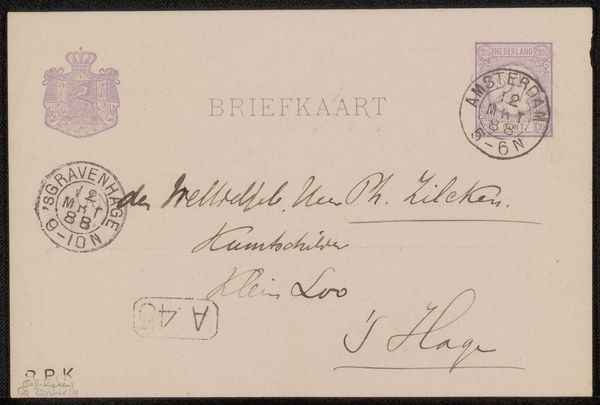
drawing, ink, pen
#
portrait
#
drawing
#
pen sketch
#
ink
#
pen
#
post-impressionism
Copyright: Rijks Museum: Open Domain
Curator: We’re looking at "Briefkaart aan Philip Zilcken," a pen and ink drawing likely created between 1903 and 1906 by Cornelis Karel Elout. It is rendered with simple strokes that compose the text of a vintage postcard. Editor: There's a ghostly elegance to it. The way the pale ink almost fades into the background, and the delicate lines create a tangible sense of age. I find the muted palette strangely appealing. Curator: It's fascinating how seemingly mundane objects like postcards offer a window into past social networks and communication methods. It reveals the materiality of interpersonal exchanges, before e-mails and smartphones. The artwork shows us both personal correspondence and an artifact within the culture of correspondence. Editor: Note the directness of the medium; it shows the immediate thought put into communicating with pen and paper, almost capturing movement. Observe, also, the faint ghost writing along the edges of some characters. What effect do you think that has in communicating ideas here? Curator: It reflects how communication has adapted due to socio-technological trends. We could think of Elout working during a vibrant age of print, where affordable paper products were widely disseminated across class divides, a trend towards global and international print exchanges of letters. Editor: Looking more at its shape, I wonder how the dimensions contribute. The horizontality gives it a sense of landscape despite the literal meaning residing more so within what's printed in ink. Do you think this relationship with visual information alters what you discussed earlier? Curator: It certainly adds to our reading, with landscape we understand the importance of locality to individuals' understanding and their ability to represent themselves to those with whom they correspond. It is a compelling artifact; this tiny moment in time communicates a depth in social values during an international epoch in visual culture. Editor: Indeed. It certainly lends us a unique opportunity for observation into its various themes and the time of its creation.
Comments
No comments
Be the first to comment and join the conversation on the ultimate creative platform.

